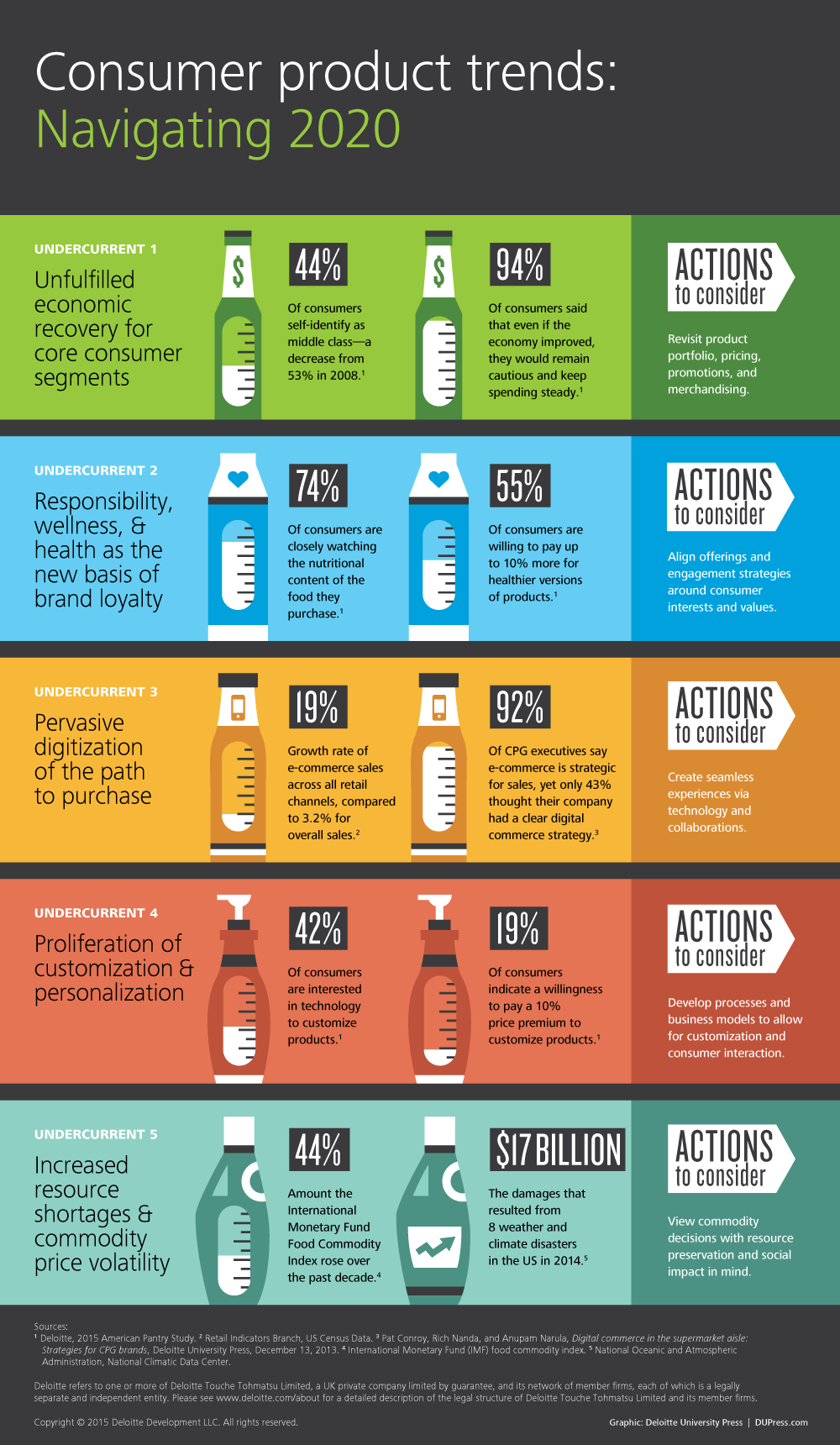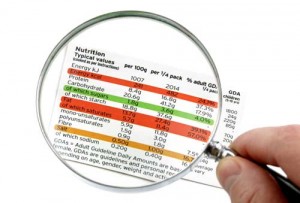Trends that are expected to dominate the global market until 2020 !

Nowadays consumer preferences are constantly changing and these changes force companies to adapt in order to meet their needs and expectations. Consequently, successful businesses need not only to satisfy customers’ current requirements, but also to predict future market trends, consumption patterns and habits as well as to adjust their respective business practices.So what are those trends that are expected to dominate the global market until 2020?
It is estimated  that the global market will be in stagnation until 2020. In this context, consumer confidence is expected to be low, thus the consumption level of major segments of the population, such as the middle class, is expected to increase only marginally. It is worth noting that, the middle class in the US has been declining for the past eight years by 8% and currently represents 44 % of the total US population. As a result, these consumers are not willing to spend much of their income for the purchase of products, with a striking 94 % of them stating that they will be cautious in money spending even if their economic status is improved.
that the global market will be in stagnation until 2020. In this context, consumer confidence is expected to be low, thus the consumption level of major segments of the population, such as the middle class, is expected to increase only marginally. It is worth noting that, the middle class in the US has been declining for the past eight years by 8% and currently represents 44 % of the total US population. As a result, these consumers are not willing to spend much of their income for the purchase of products, with a striking 94 % of them stating that they will be cautious in money spending even if their economic status is improved.
In addition, potential buyers tend to prefer those brands that maintain a responsible attitude towards health, wellness an d the environment. Indicatively, 74% of US consumers state that they examine the food labels prior to product purchases in order to ensure that they are safe for their health and the environment. Furthermore, 55 % of those consumers are willing to pay up to 10 % more for healthier versions of products. As a result, businesses that offer products that comply with the values of the consumers and meet their desires, will be able to develop emotional bonds with them, thus gaining loyal customers.
d the environment. Indicatively, 74% of US consumers state that they examine the food labels prior to product purchases in order to ensure that they are safe for their health and the environment. Furthermore, 55 % of those consumers are willing to pay up to 10 % more for healthier versions of products. As a result, businesses that offer products that comply with the values of the consumers and meet their desires, will be able to develop emotional bonds with them, thus gaining loyal customers.
 Moreover, it is estimated that the use of the Internet will be further intensified, and that it will become the main business tool, assisting companies in gaining further market share so that they increase their sales and profits. Indeed, today’s consumers are increasingly familiarized with the new technologies and social media and their purchasing decisions are influenced or even shaped by them. Indicatively, e-commerce in the US recorded the highest growth rate (19%) compared to the total growth of the retail sales of products (3.2%) during the period 2000-2013.
Moreover, it is estimated that the use of the Internet will be further intensified, and that it will become the main business tool, assisting companies in gaining further market share so that they increase their sales and profits. Indeed, today’s consumers are increasingly familiarized with the new technologies and social media and their purchasing decisions are influenced or even shaped by them. Indicatively, e-commerce in the US recorded the highest growth rate (19%) compared to the total growth of the retail sales of products (3.2%) during the period 2000-2013.
Another new trend that is expected to dominate the global consumer goods market is the personalization and customization of products, in line with the wants and needs of the target groups or target countries. Interestingly, 42% of the American consumers already emphasize on customized products and 19 % of them are willing to pay a 10 % price premium for a product that is adjusted in order to directly match their needs.
In additio n, the brands need to focus on the creation and promotion of innovative products and services that contribute to the conservation and replenishment of natural resources (e.g. through partnerships with local farmers who use advanced and ecological farming practices), to the reduction of their production costs and to the optimization of the functioning of their supply chain.
n, the brands need to focus on the creation and promotion of innovative products and services that contribute to the conservation and replenishment of natural resources (e.g. through partnerships with local farmers who use advanced and ecological farming practices), to the reduction of their production costs and to the optimization of the functioning of their supply chain.
Therefore, consumer goods companies that wish to remain competitive in a constantly changing global market must adapt their product portfolio -from design to production and distribution- according to the values, the needs and the interests of the consumers, by providing them with a pleasant personalized shopping experience through the use of new technologies and by applying innovative practices.
ΠΗΓΕΣ: Pat Conroy, Kim Porter, Rich Nanda, Barb Renner, & Anupam Narula (2015), Deloitte (2015)

